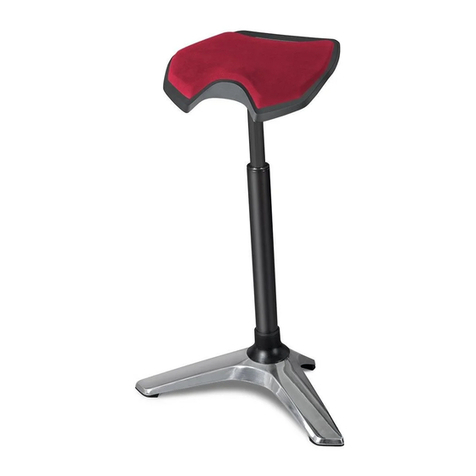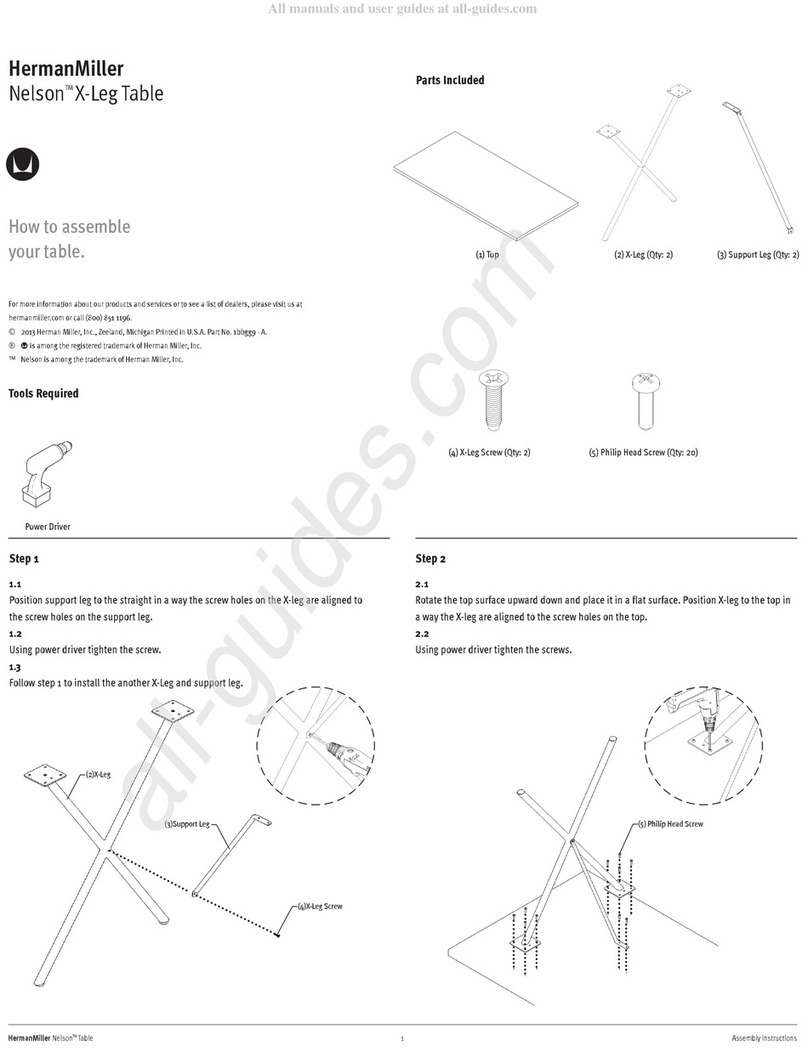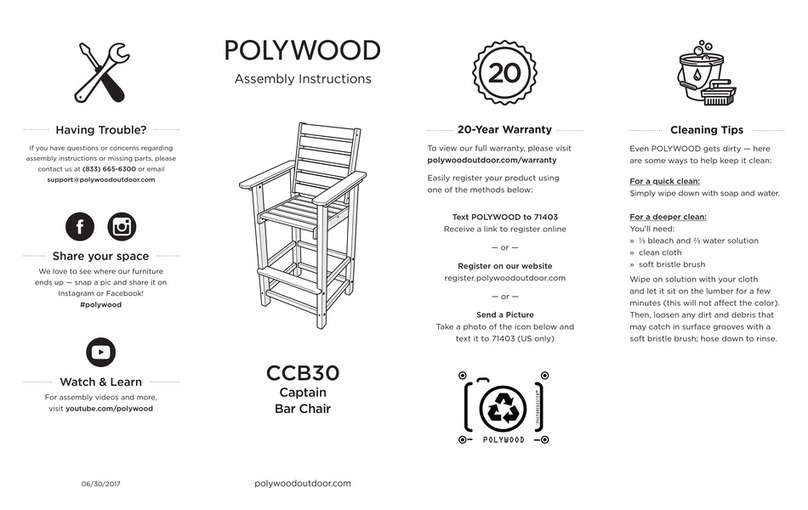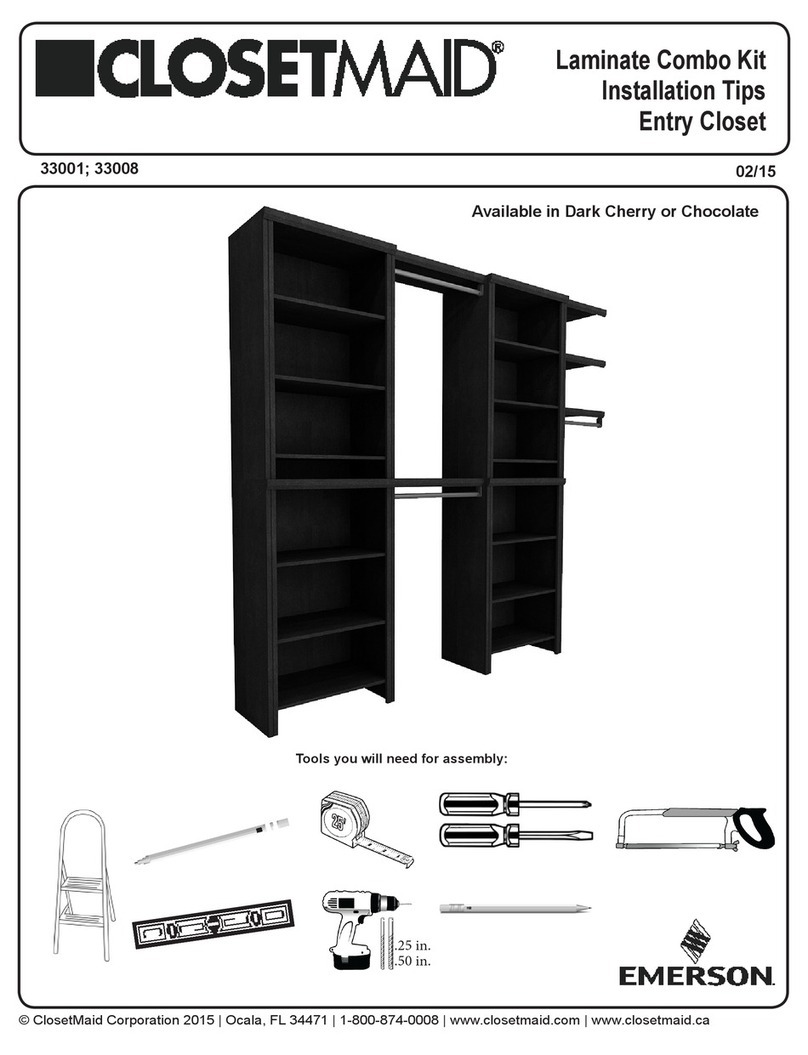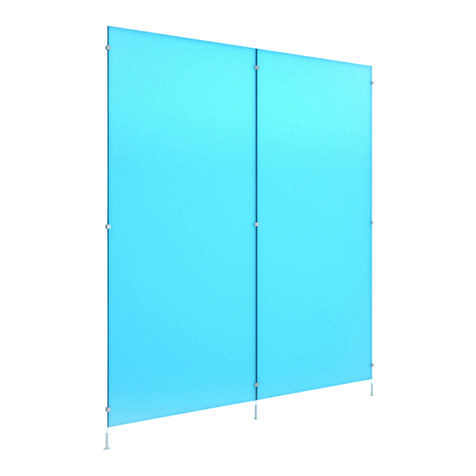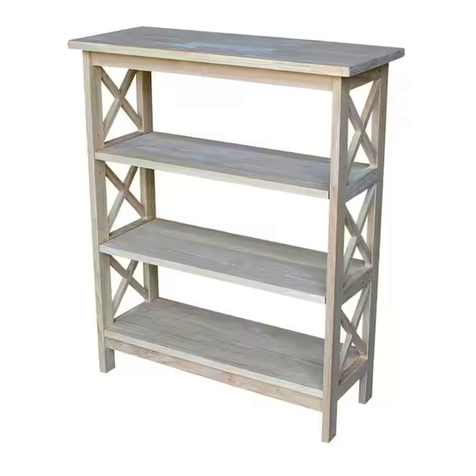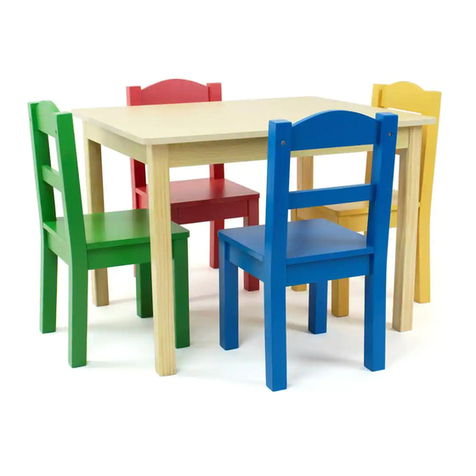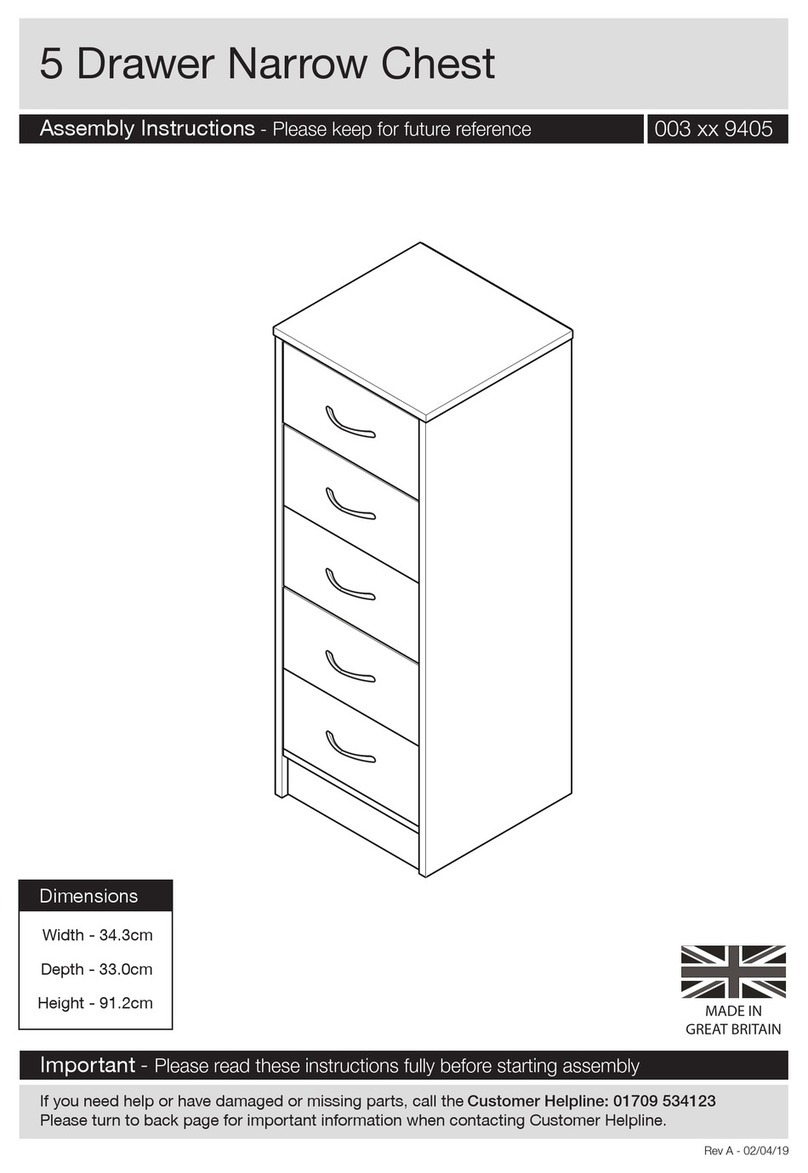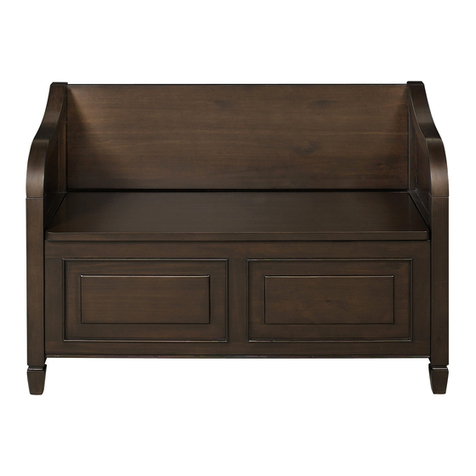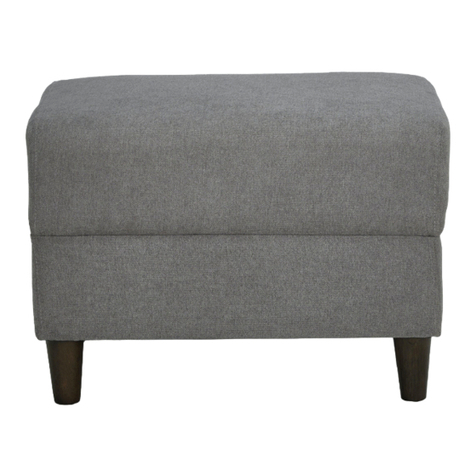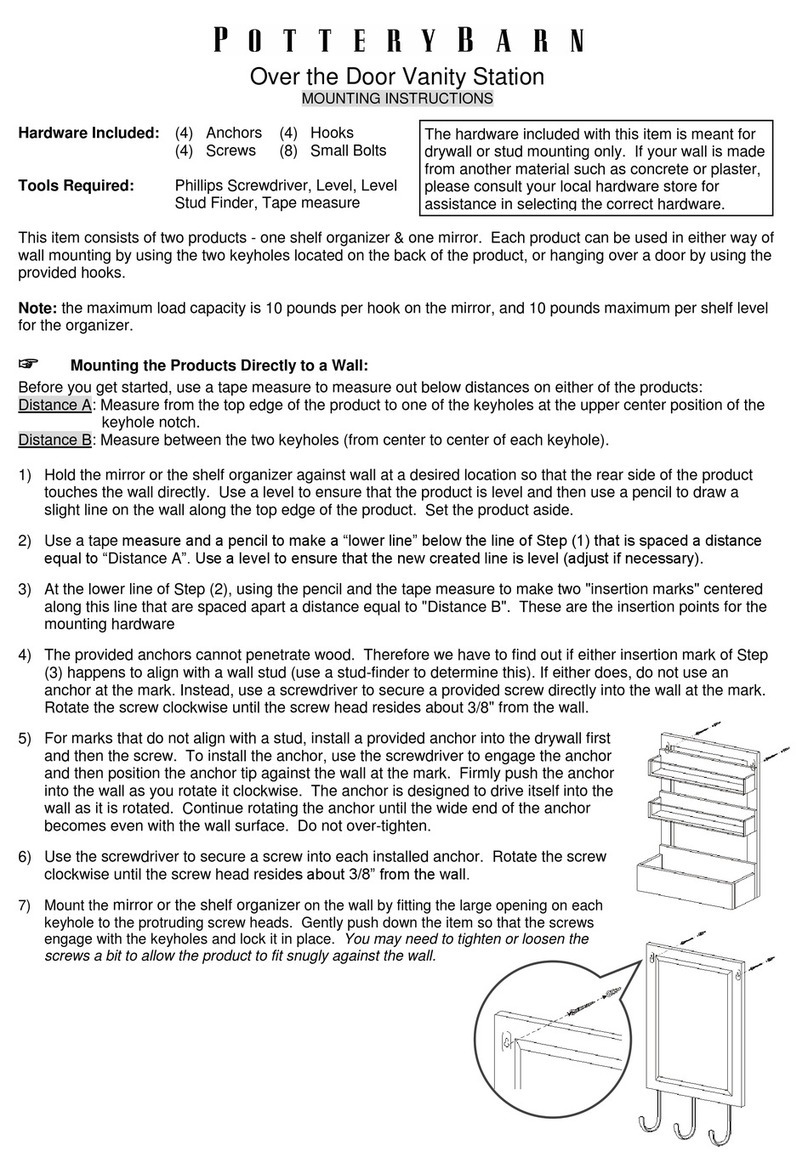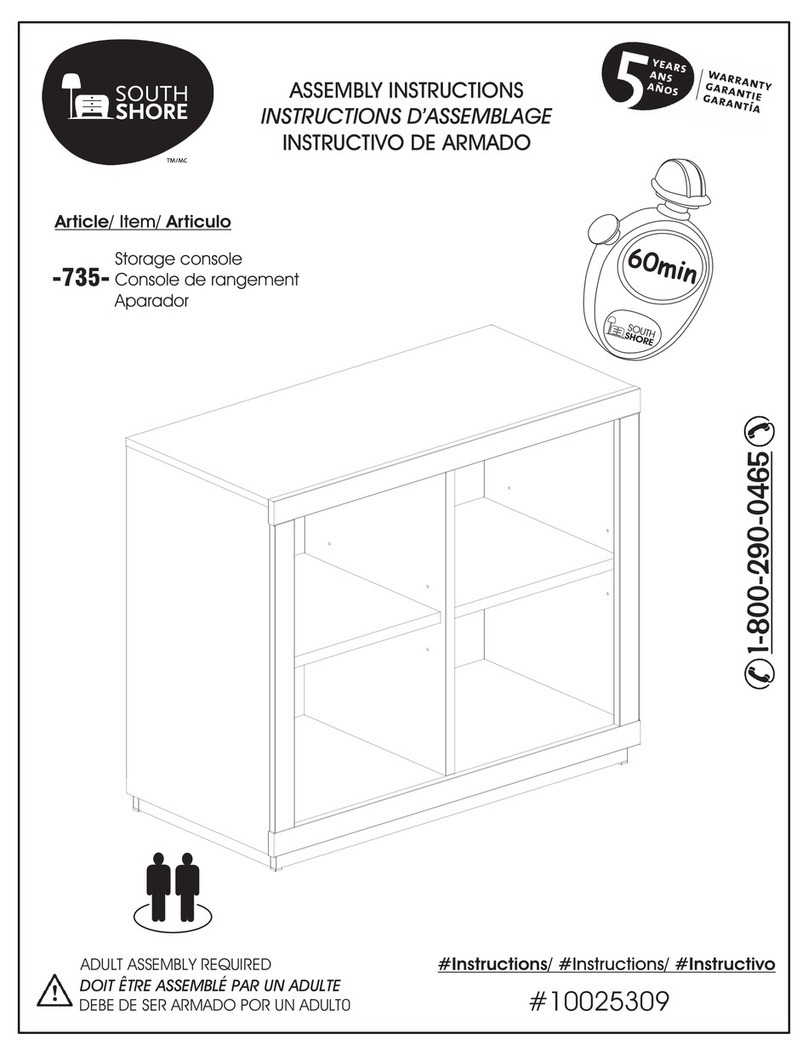
Rev. 01/08
Gluing Hints (cont.)
3.
4.
5.
6.
.
1.
2.
3.
4.
5.
.
No top coat is required if using paint.
1.
2.
3.
4.
1.
2.
3.
We recommend that you use a good wood glue, such as Elmer’s Wood Glue or White Glue, Titebond
Wood Glue or the equivalent; unless the instructions call for a special type such as a slow drying epoxy
glue. Carefully read the glue manufacture
r’s label and follow all instructions.
Avoid getting glue on surfaces to be finished! Most stains or finishes will not penetrate where glue
has been spilled. Wet glue can be wiped off with a damp cloth. Follow with a light sanding of the area
to ensure a proper finish.
Do not over glue! It is important to apply an even coat inside all holes and slots. Use a small dowel or
pencil to spread glue evenly around the inside of the holes. Because of the fit of the spindles or dowels
in the holes, the spindle or dowel pushes glue to the bottom of the hole. If too much glue is used, it will
fill the hole and not allow the spindle or dowel to go all the way in.
Test stain on an inconspicuous spot on your project, or use the sample chip if one is provided. The
sample chip must be sanded in the same way as your furniture kit to ensure the piece will accept the
stain similarly. Put at least one coat of your top coat over the stain sample, as it also affects the look of
the stain. Test every type of wood that is in your kit. Some of our products include more than one
type of wood, which may react differently to the stain color. Sample chips for the different woods may
be included. It may be necessary to add a second coat of stain to lighter woods to match the darker
woods in your kit.
Be sure the holes are clear of any dust so the glue will have a clean surface to adhere to. Blowing in
the holes before gluing is recommended, but be sure to protect your eyes.
Read and follow label directions. Stir stain well before starting.
Q-tips are ideal for hard to reach areas.
Allow to dry thoroughly before proceeding.
Apply stain with a poly brush or lint-free cloth. Apply stain over a small area and wipe off excess. Working
in small areas will make the color easier to control.
Always read and follow all label directions. Stir your finish coat gently, do not shake. It will create
bubbles that are hard to remove.
All surfaces (including the underside of table tops and inside drawers) must be sealed with at least
one layer of a top coat. This will help minimize wood swelling, shrinkage, warping and cupping due
to changes in moisture content or temperature.
We recommend that you apply a minimum of two coats when using polyurethane or varnish
(especially on all table top and work surfaces). Sand lightly between coats using a #320 grit
sandpaper or 00 steel wool for the smoothest possible finish.
Some water-based finishes tend to raise the grain slightly. This can be easily controlled with this sanding
step. However, do not use steel wool when using water-based finishes. Strands of steel fiber caught
in the wood can cause rust spots when coated with any water-based product.
For best results when painting, first coat the wood with a primer. An oil based primer would be best for
a smooth finish. If you do not wish to use a solvent based primer, a water based primer would work
almost as well.
Buy a quality brand paint. You may use a satin, semi-gloss, or gloss sheen. Apply a second coat for
a smooth finish. Lightly sand between coats using a #320 grit sandpaper, so that the second coat will
bond well. Repeat as desired.
Since there is such a variation between paint manufacturers, refer to your paint supplier for specific
advice on using the paint that you purchase.
Painting:
Applying the Top Coat:
Staining:







